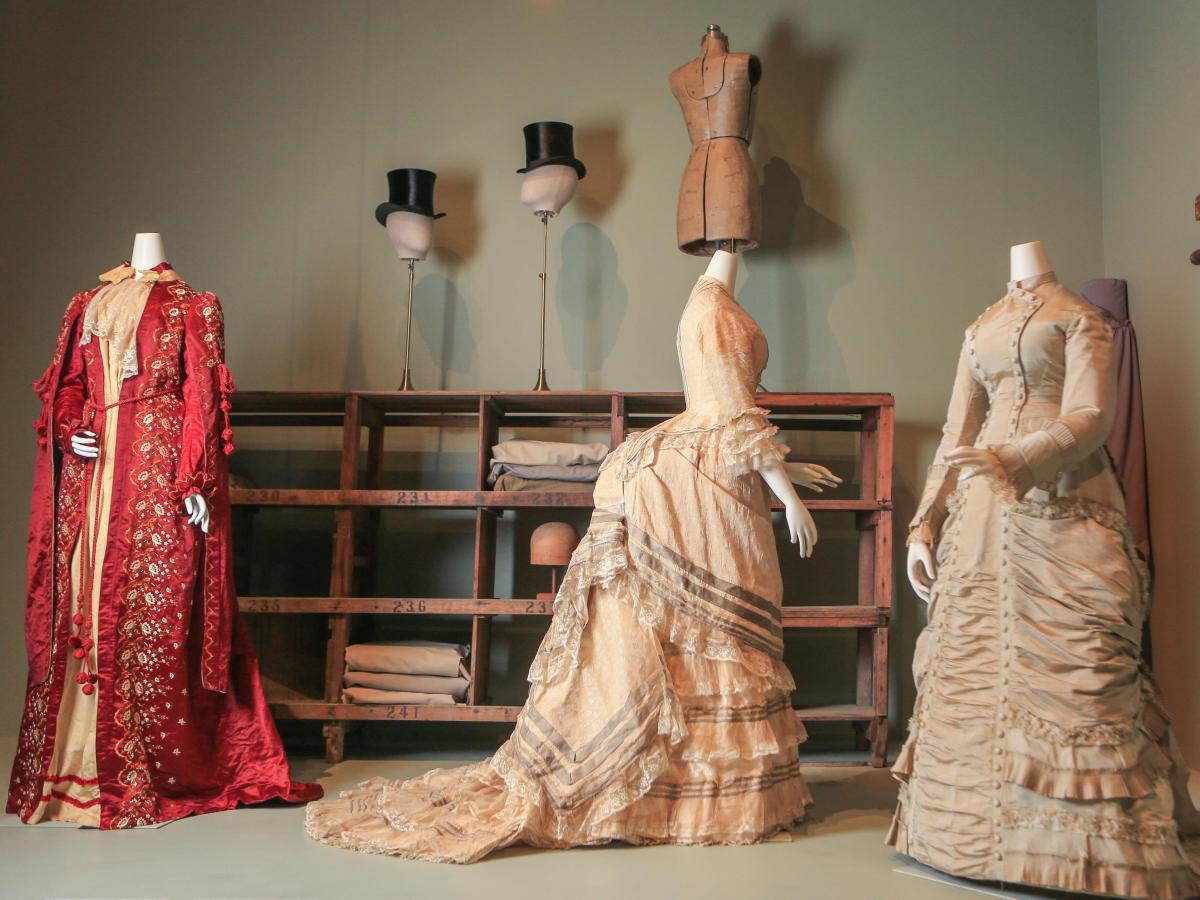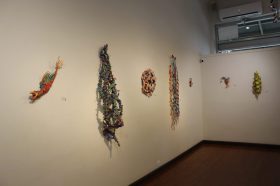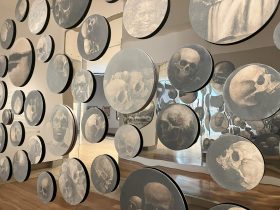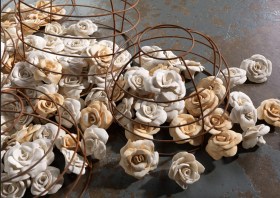Image: supplied.
A major exhibition, 200 Years of Australian Fashion is on now at the National Gallery of Victoria, coinciding with the Virgin Australia Melbourne Fashion Festival.
The exhibition actually encompasses 210 years, with the earliest garment believed to date from 1805. Some of these earlier designs (including a wedding dress) belonged to the wives of officials and surprise with their simplicity.
Australian fashion parallels the evolution of Australia’s economy. After the muted entrance, the exhibition bursts into the ‘emporium’ room, charting the explosion of wealth in gold rush-era Melbourne and the emergence of department stores from the 1850s onward. Tailors and dressmakers also proliferated, offering imported and local designs.
The emporium room cleverly uses wallpaper, pressed metal and a balcony railing to evoke a department store. Mirrors behind the garments are another helpful touch. Subsequent rooms use bolts of fabric to suggest a tailor or dressmaker salon.
The exhibition is overwhelmingly of women’s fashions and followers of men’s fashions will be disappointed. Unsurprisingly, the audience on this particular day was almost entirely women.Those wanting to know more about craftsmanship and technique, or the jewellery or underpinnings worn with the garments will be disappointed. There was a generous sampling of hats (mostly modern), but other accessories were few.
This room hints at social change with a rapid evolution of styles, allowing comparison between a black, bustled dress by Robertson and Moffat of 1880-90 to a black dress by Petty’s of c.1906. The latter follows a natural, slimmer silhouette that would not be out of place today. The exhibition notes also that by this date black was no longer reserved for mourning. These are dramatic changes evident across only fifteen or twenty years.
The exhibition gently highlights the importance of fashion as a business opportunity for women. Dressmaking businesses provided an opportunity not only to gain employment outside the home, but also to be entrepreneurs in their own right.
Garment sellers assiduously chased competitive advantage. The exhibition points out the emergence of the ‘label’ in the mid-nineteenth century, a practice soon adopted by Australian garment makers. This enabled dressmakers to distinguish their brand from their competitors, suggesting a higher quality. Competition was also pursued through other means, such as (Farmer and Co in Sydney) installing the first plate glass windows in Australia to improve the visibility of their wares.
The exhibition detours slightly with two turn-of-the-century riding habits. Although only a decade apart, these garments are noticeably different. The later piece, an easy-fitting brown jacket from around 1909 offered an ease of movement almost unimaginable when looking at the tightly-fitting buttoned-up Victoriana from 1898. Again, as with the two black dresses mentioned earlier, this highlights the significant changes that occurred during this period.
The exhibition then leaps with a shock into the mid-twentieth century. Corsets, bustles and even sleeves are gone, replaced by strapless, low-backed and halter styles. Influences turn modern, with a sheath dress inspired by Hollywood.
Moving along, fashion again falls into lockstep with economy. As wealth became more democratised so did garment designs, becoming amazingly varied and a allowing a profusion of designers. In the 1980s fashion shifted away from the fully tailored (woven fabric) garments to knitwear. Vibrant, bold patterns featured heavily, with designers such as Flamingo Park and Ruby Brilliant.
The exhibition speeds into the 21st century, which is well represented, no doubt due to the availability of garments. One disappointing note: here, as in other rooms, it is not always entirely clear which information panel relates to which garment.
The exhibition closes with works by contemporary Australian designers. Dion Lee and Toni Maticevski astound with their mastery of folding, wrapping and structuring, while Strateas.Carlucci demonstrate the perfection of a man’s suit.
Two installations of runway videos close the show. These were an essential complement: the exhibition offers a unique opportunity to see garments up close and personal, to examine the design and the evolution of forms. However, clothing is designed to be on a living, moving body, and it is fitting that this is how the show ends.
200 Years of Australian Fashion
NGV Australia, Federation Square, Melbourne
Until 31 July 2016





